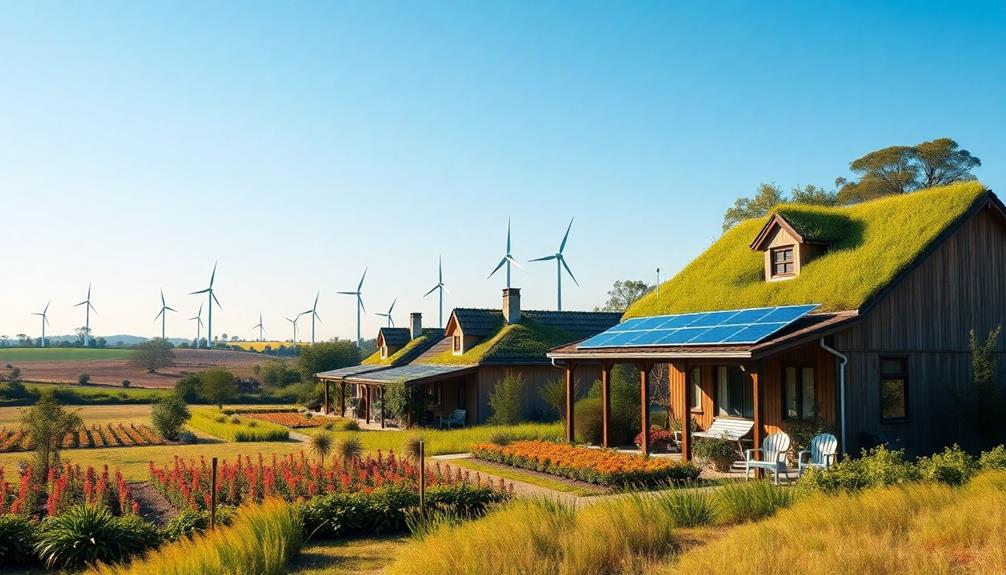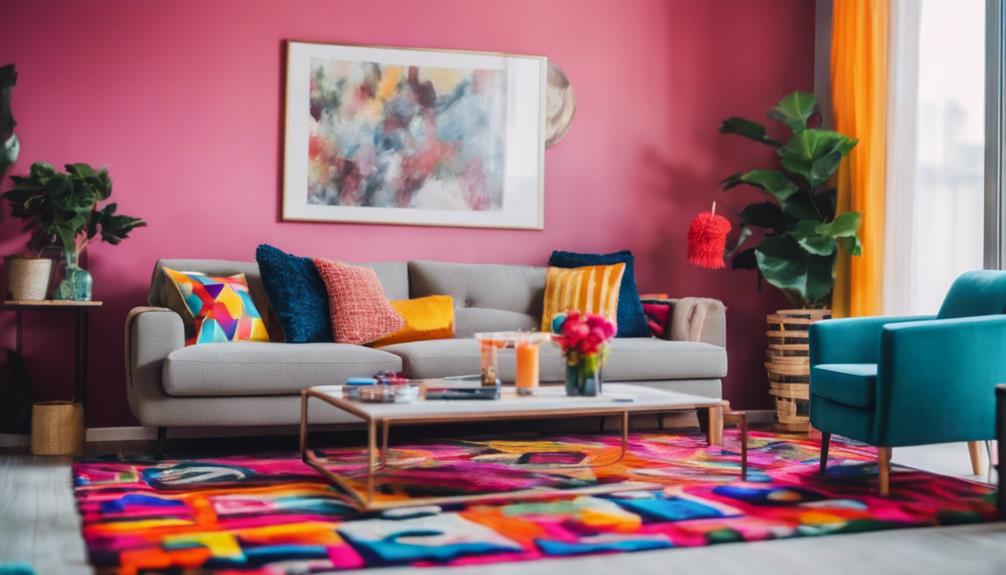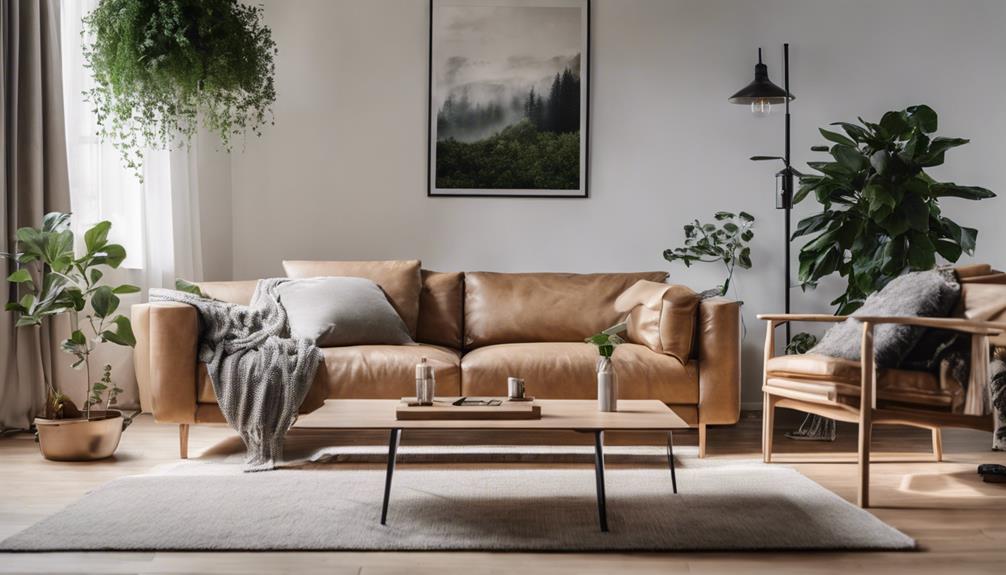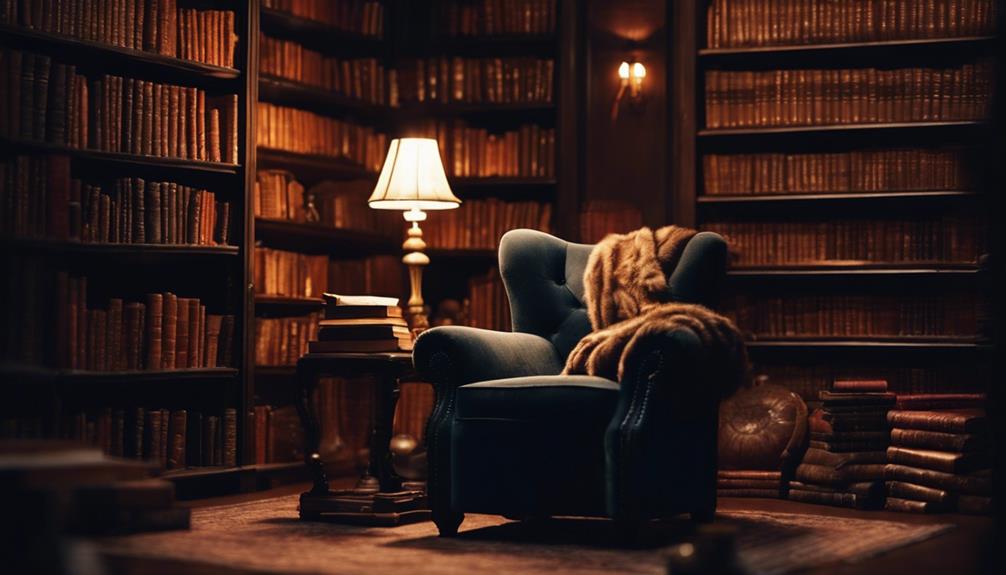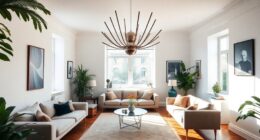You'll find that the top five sustainable trends in rural design include energy efficiency, innovative water management, biophilic design principles, the use of local materials, and adaptive reuse strategies. Embracing energy efficiency cuts down on consumption and costs, while smart water management techniques help conserve precious resources. Incorporating natural elements through biophilic design creates a calming environment, and sourcing local materials reduces emissions and boosts the economy. Finally, adaptive reuse breathes new life into existing structures, preserving heritage and community identity. Explore how these trends can transform rural spaces and benefit both you and the environment.
Key Takeaways
- Passive Solar Strategies: Optimizing home orientation and thermal mass can reduce energy consumption by up to 30% in rural designs.
- Water Management Innovations: Implementing rainwater harvesting and greywater recycling can significantly reduce reliance on municipal water sources.
- Biophilic Design Principles: Incorporating natural elements into designs enhances well-being and supports biodiversity, creating a harmonious relationship with nature.
- Use of Local Materials: Sourcing materials locally decreases transportation emissions and supports the local economy, promoting sustainable building practices.
- Adaptive Reuse Strategies: Revitalizing existing structures can reduce emissions by up to 80% while preserving cultural heritage and stimulating local economies.
Energy Efficiency in Rural Design
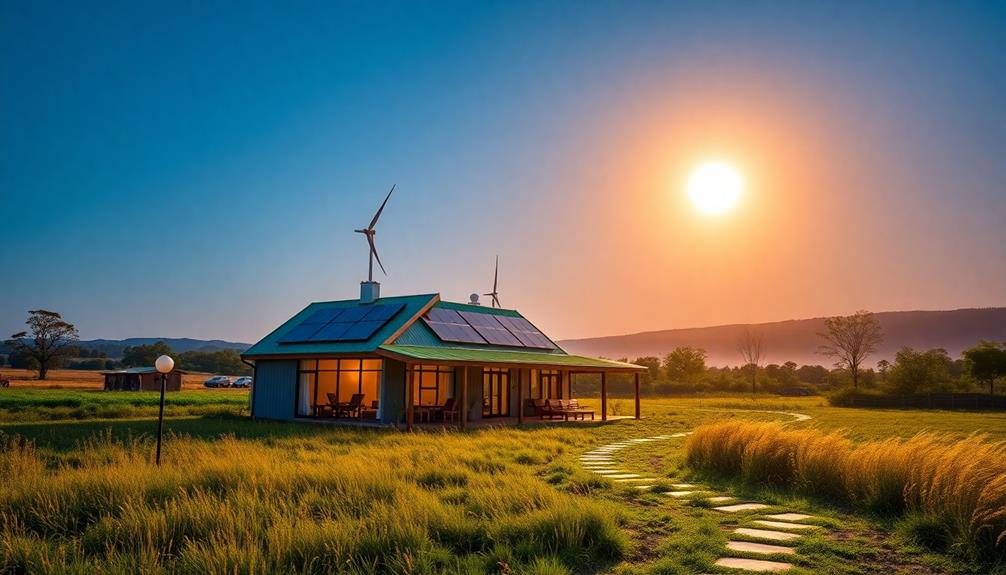
Energy efficiency is a key focus in rural design, and it's transforming how homes are built and maintained. By incorporating passive solar strategies, you can optimize your home's orientation and thermal mass, cutting heating and cooling needs and potentially reducing energy consumption by up to 30%.
In Indonesia, traditional housing designs, such as the elevated "Rumah Adat," inherently utilize natural ventilation and thermal mass to enhance energy efficiency, demonstrating a blend of cultural heritage and modern sustainability practices traditional housing benefits.
Energy-efficient appliances are also a game changer, using 10-50% less energy than older models, markedly lowering greenhouse gas emissions.
Moreover, integrating renewable energy sources like solar panels can power your entire household, drastically decreasing reliance on non-renewable resources.
Smart home technologies, such as smart thermostats and lighting systems, enable you to monitor and optimize energy usage, leading to an impressive 20% reduction in overall consumption.
Don't overlook insulation improvements, either. By utilizing eco-friendly materials, you can enhance airtightness in your home, saving between 20-50% in energy costs compared to traditional construction methods.
Together, these elements of sustainable design not only create comfortable living spaces but also contribute to a healthier planet by reducing energy consumption and greenhouse gas emissions.
Embracing these innovations makes your rural home more efficient and environmentally friendly.
Water Management Innovations
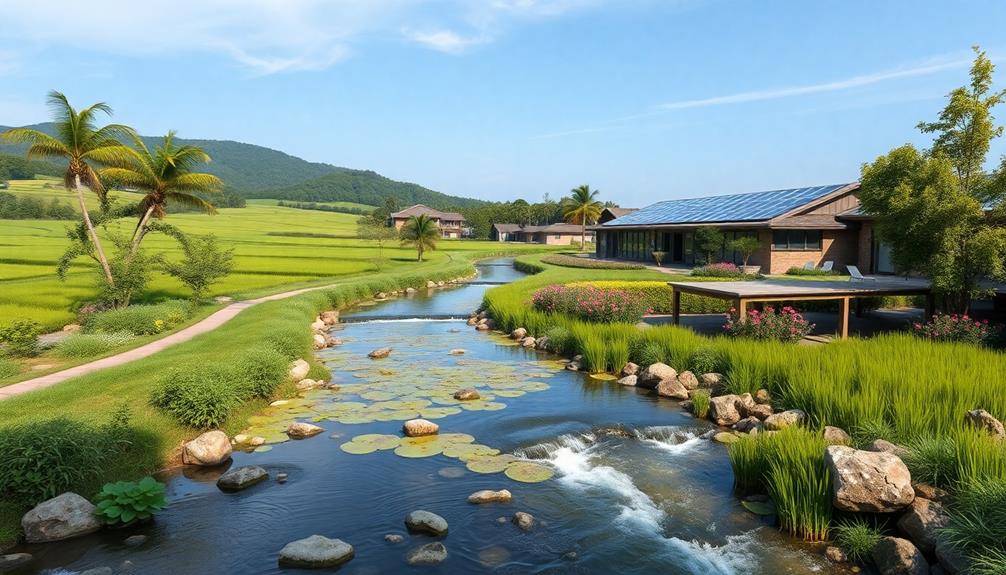
As rural homes become more energy-efficient, it's important to also focus on water management innovations that support sustainable living. One effective approach is rainwater harvesting, which can capture and utilize up to 60% of annual rainfall for irrigation and non-potable uses. This considerably reduces reliance on municipal water supplies.
Balinese design characteristics emphasize sustainable practices that can be integrated into rural settings. Additionally, greywater recycling systems allow you to reuse water from sinks, showers, and washing machines, potentially providing up to 50% of the water needed for landscape irrigation.
Implementing drought-resistant landscaping can further help you reduce water consumption by up to 30%, all while maintaining aesthetic value and promoting biodiversity.
You can also enhance environmental sustainability through efficient stormwater management techniques, like permeable pavement and bioswales, which allow up to 90% of rainfall to infiltrate the ground naturally, mitigating runoff and local flooding.
Biophilic Design Principles
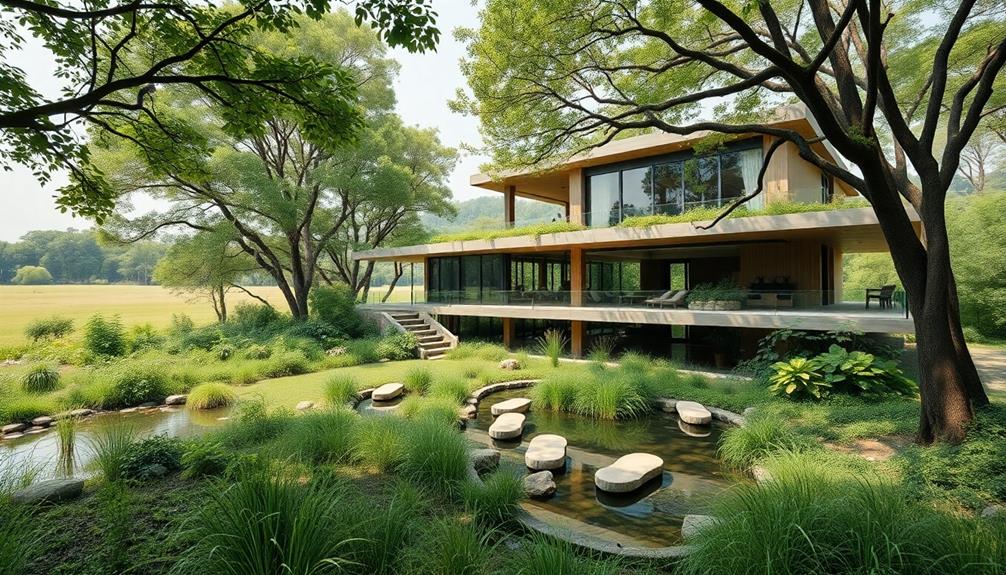
Biophilic design principles profoundly enhance your living environment by seamlessly integrating natural elements into architectural spaces. By incorporating features like plants, water elements, and green roofs, you're not just beautifying your home; you're promoting overall well-being.
Indonesian decorative pillows with vibrant colors can also complement this design by bringing in cultural elements that reflect nature. Research shows that environments designed with biophilic elements can boost satisfaction and well-being by up to 30%.
In addition, implementing daylighting strategies allows for natural lighting that can increase productivity in workspaces by around 20%, improving mood and energy levels. Using sustainable materials like wood and stone not only elevates aesthetic appeal but also enhances indoor air quality by minimizing harmful VOCs often emitted by synthetic materials.
Moreover, biophilic design fosters biodiversity by creating habitats for local wildlife, which is essential for ecological health in both urban and rural settings.
The environmental benefits of these principles are significant, as they encourage a harmonious relationship between occupants and nature. By embracing biophilic design, you're investing in a healthier, more connected living space that nurtures both you and the environment.
Use of Local Materials
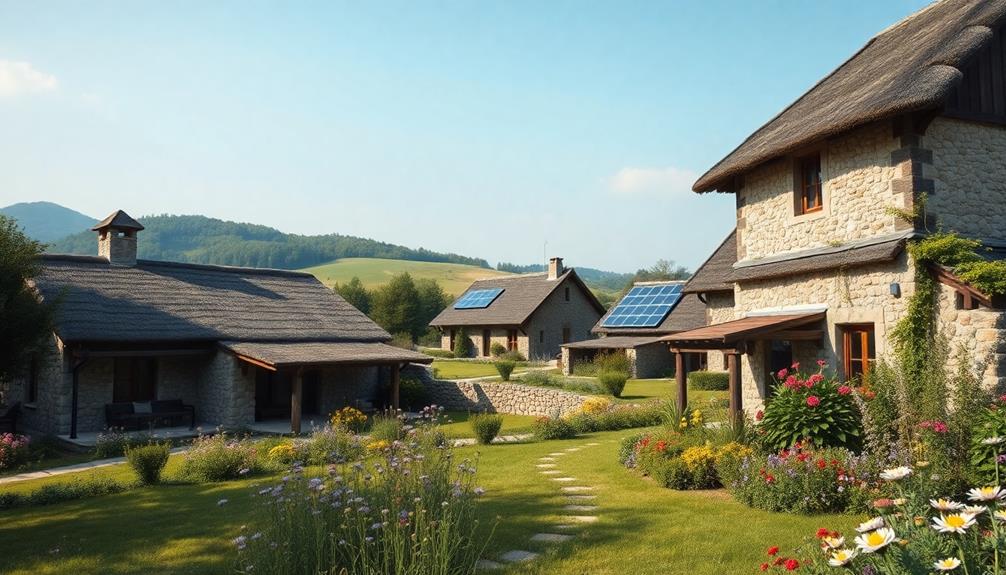
Incorporating biophilic design principles naturally leads to a focus on the materials used in construction. By utilizing local materials, you can greatly reduce transportation emissions and lower your project's carbon footprint. Sourcing materials within a 500-mile radius not only supports the local economy but also enhances the aesthetic harmony of your building with its surroundings, promoting a strong sense of place and cultural identity.
This approach is particularly evident in traditional Indonesian houses, where natural materials like bamboo and wood are commonly used to create structures that blend seamlessly with their environment.
Locally sourced materials like timber, stone, and clay often come with lower costs since they eliminate the expenses associated with long-distance shipping. This practice also helps regional craftspeople and suppliers thrive.
Furthermore, buildings constructed with these durable materials are typically better suited to local climates, resulting in improved resilience and longevity.
Using local materials contributes to sustainable building certifications, such as LEED, by promoting sustainable sourcing and greatly reducing the overall environmental impact of your construction project.
When you prioritize local materials, you're not just making an eco-friendly choice; you're also celebrating the unique character of your community while fostering a more sustainable future.
Adaptive Reuse Strategies
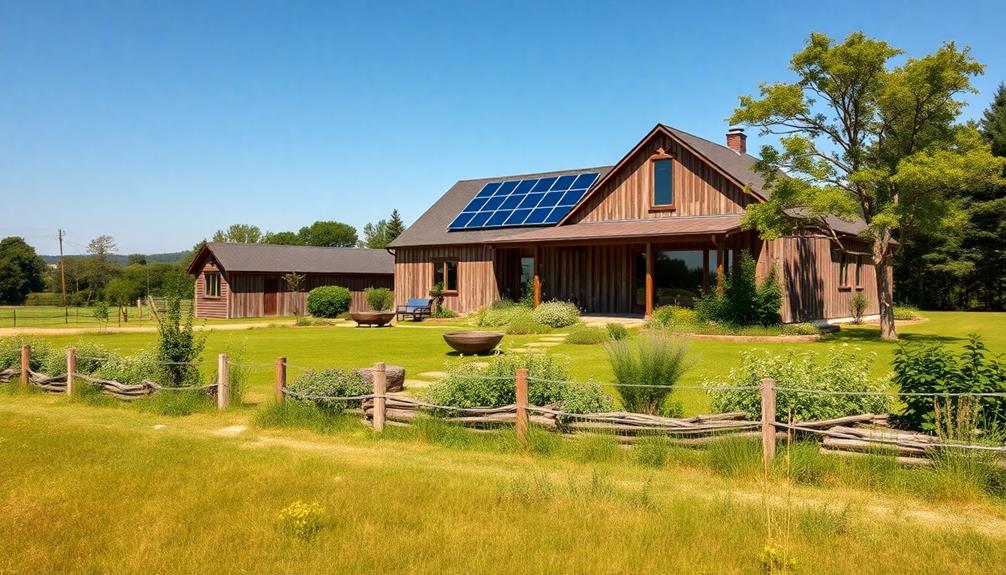
Embracing adaptive reuse strategies can breathe new life into existing structures while greatly reducing waste. This approach not only supports sustainable development but also addresses environmental challenges by lowering the carbon footprint, much like the principles found in traditional Indonesian style home decor.
By repurposing structures, you can revitalize rural areas and enhance community appeal.
Here are three key benefits of adaptive reuse:
- Lower Emissions: Reusing materials can lead to up to 80% fewer emissions compared to new construction, greatly reducing your project's carbon footprint.
- Economic Stimulation: By converting historic sites like old barns or warehouses into functional spaces, you boost local economies, creating jobs in renovation and design while attracting residents and businesses.
- Increased Property Values: Successful adaptive reuse projects often yield a return on investment of up to 30%, thanks to improved energy efficiency and enhanced community functionality.
Engaging in adaptive reuse not only conserves resources but also preserves cultural heritage.
Frequently Asked Questions
What Are the Examples of Sustainable Development in Rural Areas?
You can see sustainable development in rural areas through organic farming practices, innovative water management, renewable energy projects, community gardens, and improved infrastructure. These initiatives enhance local economies, promote environmental health, and foster social cohesion.
What Are the Sustainable Design Trends in 2024?
Imagine planting seeds in fertile soil; in 2024, you'll embrace trends like renewable energy, efficient water use, and biophilic design. These practices nurture both your community and the environment, cultivating a sustainable future together.
What Are the 4 Common Features of Sustainable Design?
Sustainable design commonly features energy-efficient systems, sustainable materials, water conservation techniques, and a focus on enhancing indoor environmental quality. These elements help you create spaces that are both environmentally friendly and beneficial for occupants' health.
What Are Some Examples of Sustainable Design?
You'll find sustainable design examples in using renewable materials like bamboo, integrating solar panels, implementing rainwater harvesting systems, creating drought-resistant landscapes, and establishing community gardens that enhance local food production and social connections.
Conclusion
Incorporating these top five sustainable trends in rural design isn't just a choice; it's a commitment to a healthier planet. By prioritizing energy efficiency, innovative water management, and biophilic principles, you can create spaces that harmonize with nature. Using local materials not only supports the community but also reduces your carbon footprint. Plus, adaptive reuse breathes new life into old structures, proving that sustainability and creativity can thrive together. Embrace these trends, and watch your designs flourish.
